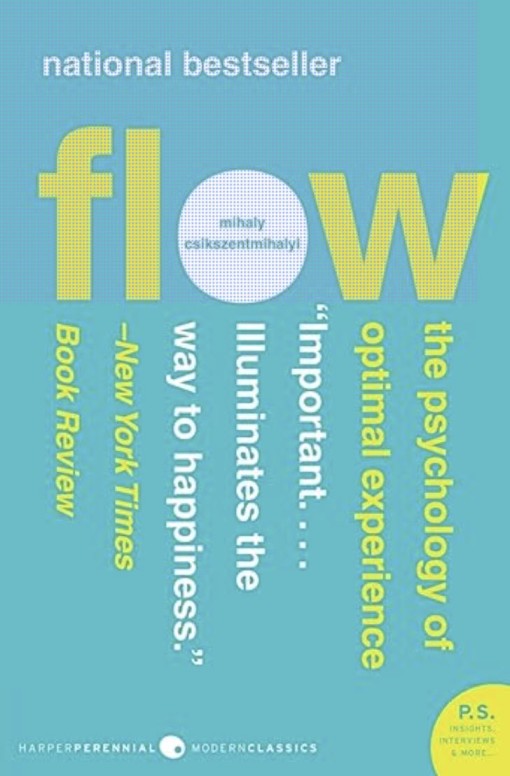Flow states just don’t occur randomly. They require several factors to align. Some factors can be “arranged” while others are context-driven or part of a large feedback loop. I find three concepts central to Chapter 4, The Conditions of Flow of Mihaly Csikszentmihalyi’s Flow.
The first is that flow disrupts our equilibrium by altering our consciousness. The author suggests a model in which flow allows us to solve a problem or learn something. This, in the short run, makes us happy; however, that happiness is temporary because it reflects a raising of the bar. Over time anxiety slips back as we reach for that feeling of happiness and repeat the process. I read the author’s model several times before becoming comfortable. This cycle of anxiety, flow, happiness, and then back to anxiety sounded like Sisyphus’s hell. Stepping back from my visceral reaction, on reflection, the pattern is recognizable as a cycle of growth and learning. We address an anxiety or problem through focus and flow continuing the cycle. Some friction or anxiety is required to generate the energy to work toward flow. Without flow, we are apt to be stuck in the same state.
For most people, flow states are accidental. They do not have to be. Scenarios predisposed to flow can be manufactured. The old saying is that you can lead a horse to water but can’t make them drink. However, if there is no water it doesn’t matter even if they want to drink. Aligning the prerequisites for flow is analogous to digging a well before you lead the horse to water. Of the factors Csikszentmihalyi identifies contributing to flow, several lend themselves to conscious manipulation.
- Balance of challenge and skill: Package work so it is challenging but achievable with your current skill set. Remember the three bears and create work packages that neither bore or frustrate.
- Clear goals: Make sure you know exactly what you’re trying to accomplish which helps you focus and stay motivated. Note: I don’t think this means that serendipity is not possible – more on this later.
- Immediate feedback: Use work styles that foster feedback. Getting feedback on your progress keeps you engaged and allows you to adjust your approach as needed. Examples include agile and lean approaches.
- Sense of control: Foster a belief that you have the agency to impact the outcome of the task.
Other factors that are stagable but in a work environment to a lesser extent include:
- Finding an activity you enjoy: Intrinsic motivation is key. You’re more likely to get lost in something you find inherently rewarding.
- Minimizing distractions: Find a quiet space and silence notifications to maximize focus.
- Proper rest and preparation: Being well-rested and prepared for the task fosters concentration.
The less stageable factors point to a third point I took from this chapter, culture. The author points out that “cultures are defensive constructions against chaos. Designed to reduce the impact of randomness of experience. Cultures, by creating homogeneity, can make attaining optimal experiences difficult or impossible. For example, several large consulting firms regularly “overclock” junior employees, blowing the proper rest factor away. Even in scenarios where culture is optimized for optimal experiences, that optimization is a point-in-time affair. The world is dynamic and unless the culture is equally dynamic we’re facing only a temporary equilibrium. Arguably, the terms dynamic and culture are difficult to combine, as over time culture gets locked in and begins to defend against the perceived chaos of change.
One final note, while optimal experiences and flow are moments to be strived for there could be a dark, narcissistic side to striving constantly to align the needed factors. Real life is a balance between flow and non-flow experiences. For example, minimizing distractions and mentoring a colleague is very different from putting on headphones to block the world out to solve a three-body problem. Something we will tackle in Chapter 8.
Buy a copy and read along – https://amzn.to/4b5kPmb
Week 1: Preface and Logistics – https://bit.ly/3WLjFHU
Week 2: Happiness – https://bit.ly/4dUSpNg
Week 3: Consciousness – https://bit.ly/4bEu3pN Week 4: Enjoyment and The Quality of Life – https://bit.ly/4eeknDQ

Leave a comment